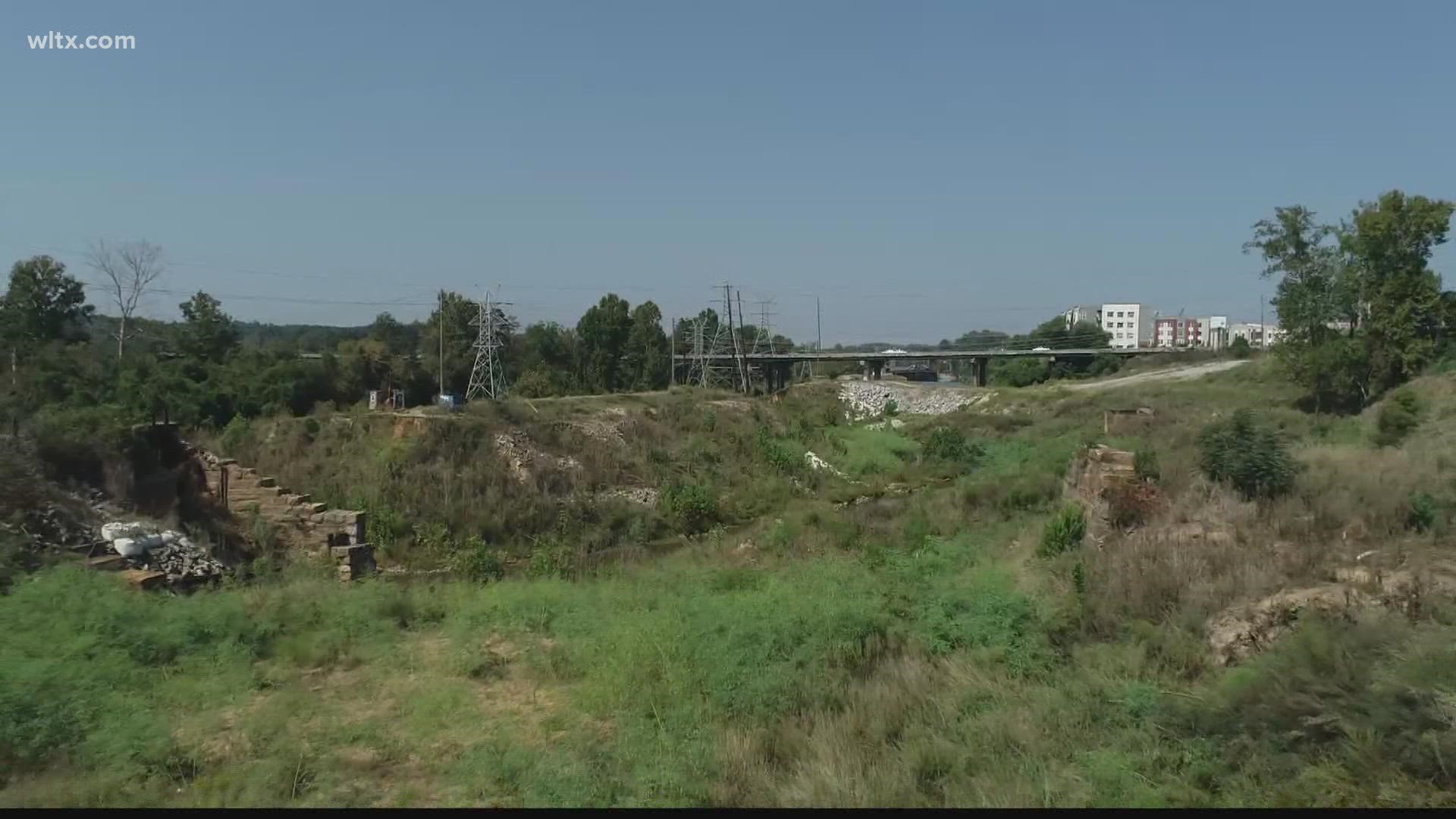COLUMBIA, S.C. — It's been nearly six years since the Thousand Year Flood that devastated the Midlands.
Back in October of 2015, Hurricane Joaquin brought more than 20 inches of rain to the Capital City and its surrounding communities.
The Congaree River reached its highest flood level since 1936.
The Thousand Year Flood event ended up claiming the lives of 19 people, with nine of them being in Richland County.
One of the area's most impacted from the flood includes the Columbia Canal, Columbia main source of drinking water.
Since it was destroyed, the canal by South Carolina State Museum and EdVenture has remained dry.
Clint Shealy, the assistant city manager with Columbia Water, says the floods impacted the Columbia Canal in a great way.
"The inflow into our canal both at our headgate structure and overland flow from the city into the canal itself, created more flow than the outlet structure could handle," explained Shealy.
There was overtopping of the earth and embankments that's from the late 1800's. According to the assistant city manager, those type of embankments are not designed to overflow. With the erosion of embankment, that section of the canal was washed out.
"That water supply started leaving very quickly and we had to implement some emergency management measures to bolster our water supply and be able to continue supplying water to our citizens," said Shealy.
There's been several hurdles Columbia Water has faced in order to fix the canal. One has been the repairing something of this magnitude as a civil works project.
"Whenever a disaster occurs like that, the first thing you've got to do is demonstrate the damage and it's really obvious to the naked eye we've got a breach in our canal but there were also some damages upstream that needed to be considered," explained Shealy.
Columbia Water has been negotiating with FEMA about the costs of repairing the canal.
"It's been quite some time. We all had hoped we would be repaired by now but we do have a very robust interim operating strategy working for us and feel good about where we are and where we're headed in terms of our agreement with FEMA," said Shealy.
Initially, Columbia Water thought FEMA's offer was low and would not be able to repair the canal to the same condition it was prior to the flood.
After getting a third party involved to look into the project, they settled on receiving $42 million to repair the embankment and the breach. This settlement was made about two years ago.
Since then, they've been trying to design the project. They also had to look at environmental, social and historic impacts.
Columbia Water had a virtual public meeting last Thursday to discuss the canal recovery.
"We got feedback from the community about some of the historical assets that are there," said Shealy. "There is ruins from an 1891 hydroelectric generating station and also an 1896 hydroelectric generating station. So we want to be respectful of the history that was there as we look to build back a stronger canal segment there."
Columbia Water has been looking at ways to get funding for the project to build the canal in a better way.
12 of the headgates at the entrance of the canal will need to be replaced. Columbia Water has secured Community Development Block Grant Funding of about $8 million to cover the costs. They hope to bid out that part of the project late this year or early next year.
"That will give us better control of what's coming into our canal's system for hydroelectric power generation at some point in the future, but also for our water supply," explained Shealy.
The third piece of the project is putting a direct intake on the Broad River. It's expected to cost $45 million to $46 million. This part of the project is under design now. It's right across from the Columbia Canal at the water treatment plant.
"At some point in the future, if something unforeseen happens to our canal's system, we'll be able to withdraw water, much as we did on a temporary basis in October of 2015, but this will be a permanent intake, permanent piping, deliver river water directly to our treatment facility so if God forbit something else did happen to the canal or the embankment, our customers would never know the difference," said Shealy.
In total for all the repairs, it's going to cost $96 million. Columbia Water has applied for the alternate intake and the building resiliency infrastructure grant through FEMA. The organization feels good about receiving $32.5 million to $33 million with the grant.
"That means the vast majority of $95 million to $100 million worth of improvements won't be born by our rate payers," explained Shealy. "We'll have to pay 25 percent of the alternate intake if we get the grant funding."
They hope to get the Columbia Canal fixed and back up and running in the next to three to four years.
Shealy went onto say, "We're ready, so ready to be stronger than we work in October of 2015."

